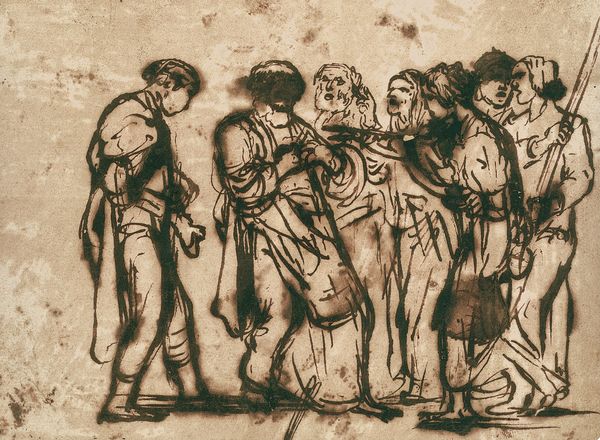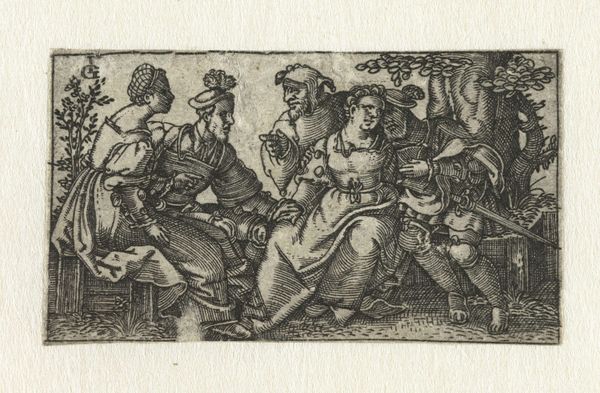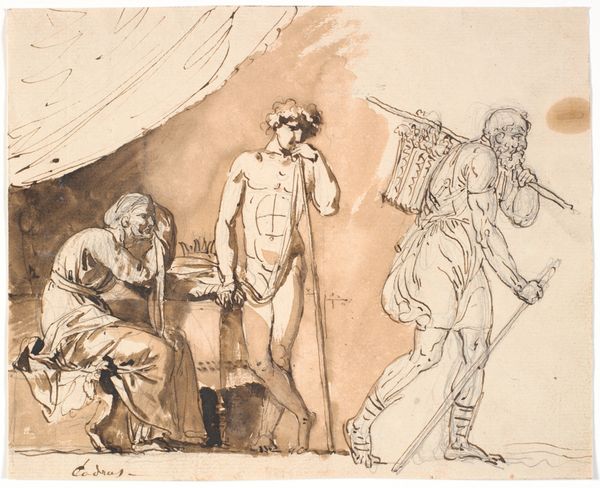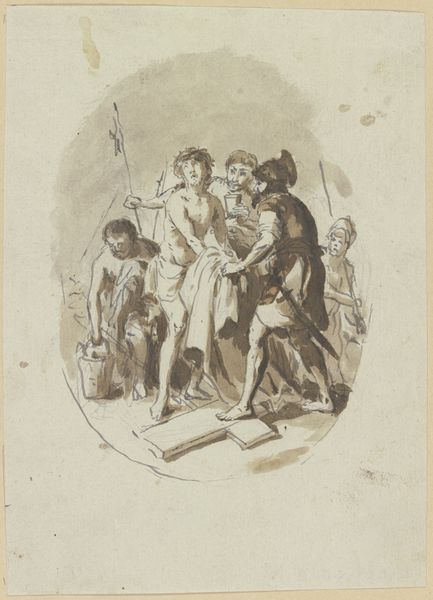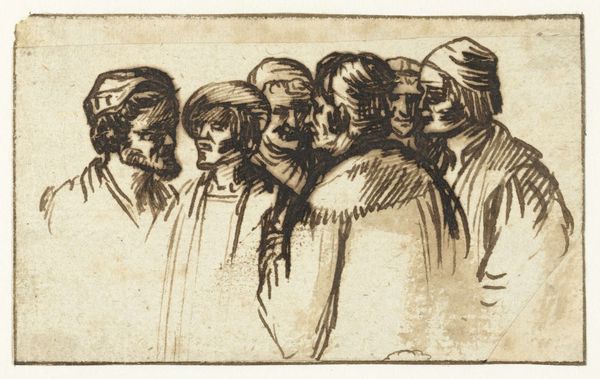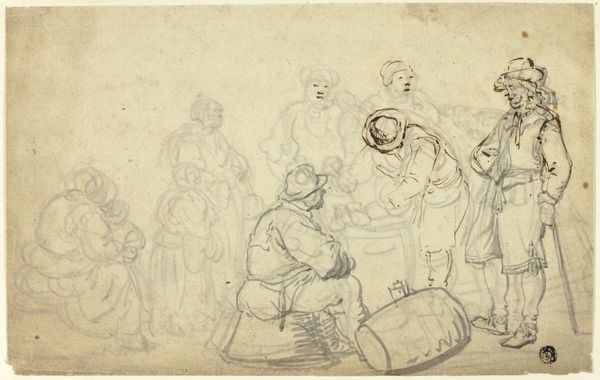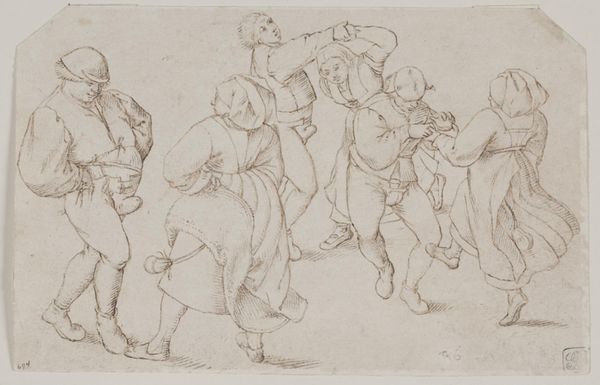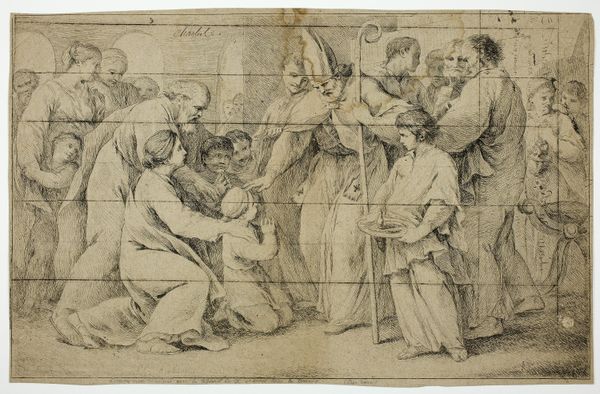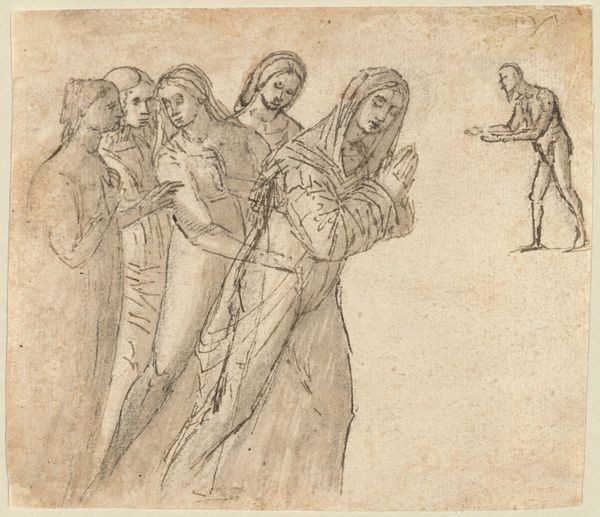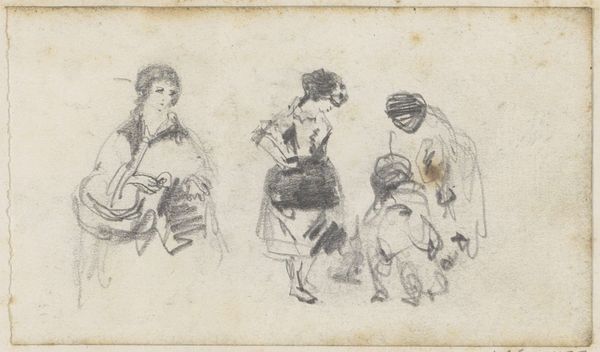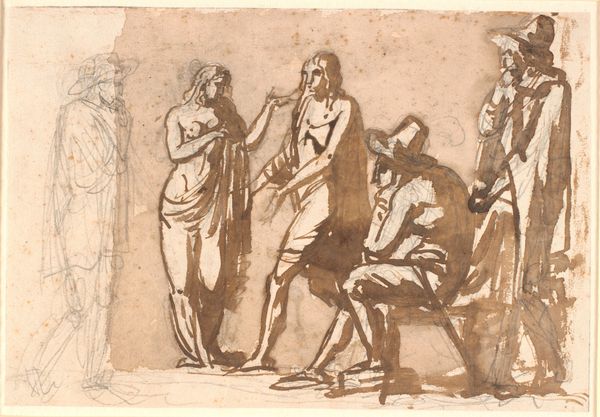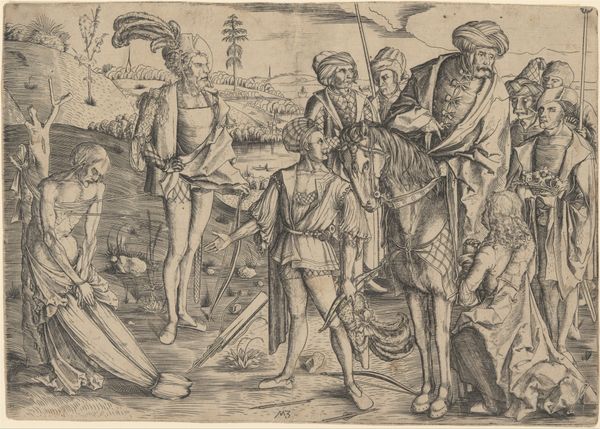
drawing, paper, ink
#
drawing
#
narrative-art
#
baroque
#
figuration
#
paper
#
ink
#
history-painting
Copyright: Public Domain
Curator: Here we have a drawing rendered in ink on paper from around 1600 to 1605, titled "The Denial of Peter," created by Adam Elsheimer. Editor: The composition is so raw. The starkness in Elsheimer’s technique—almost hurried lines and shapes, which I imagine, convey the tension in the narrative. Curator: Indeed. Elsheimer’s work sits within the early Baroque, but the art historical significance comes not just from style. He uniquely brought these innovative Italian approaches into a Northern European intellectual context. Editor: I see it as this intersection between theological and socio-political implications. "The Denial of Peter" embodies how the Baroque wasn't just ornate art for the Church; it could reflect real social anxieties, betrayals and public shaming. Peter, in this one terrible moment, embodying a broader question of what to believe, what communities to affiliate to during a time of huge conflict across Europe. Curator: Right. And Elsheimer created it amidst his most productive time in Rome. This historical placement helps us to see the politics of imagery being played out through papal powers, the influence of certain families... even a growing artist market, which allowed artists such as Elsheimer, with their individual freedoms, to choose the types of subject matters and interpretations of popular events that spoke to the emerging intellectual class. Editor: It feels surprisingly contemporary, if I can put it that way. A scene like this invites conversations around accountability, peer pressure, and how historical narratives are reshaped based on our subjectivities. Even within religious imagery, the denial reflects something really relevant now, which is about interrogating faith versus reality in a changing landscape. Curator: Absolutely, and what makes this work particularly valuable is how Elsheimer navigated the landscape of creating within systems and sometimes despite them, giving agency and creative autonomy. Editor: Well, it’s sparked a whole new way for me to read Baroque art. Curator: For me too. Understanding how pieces like this enter and shift our current dialogue helps redefine what we collect and analyze.
Comments
No comments
Be the first to comment and join the conversation on the ultimate creative platform.
